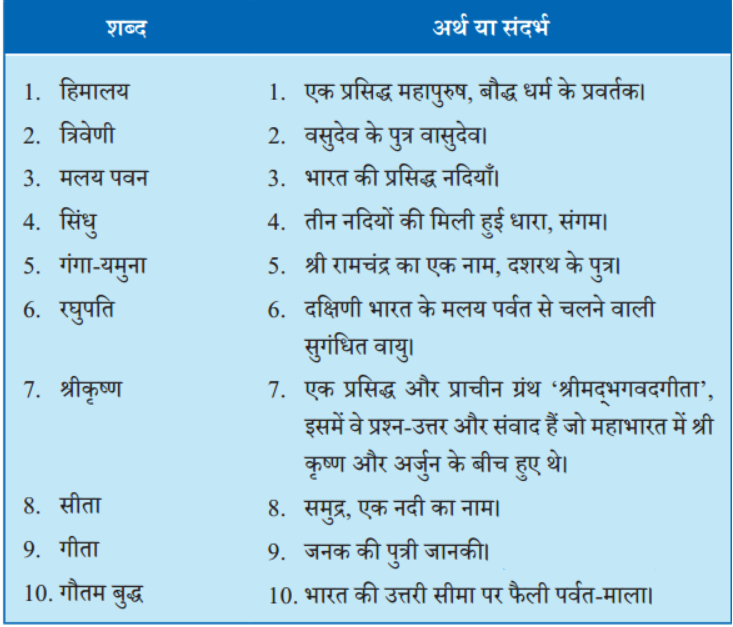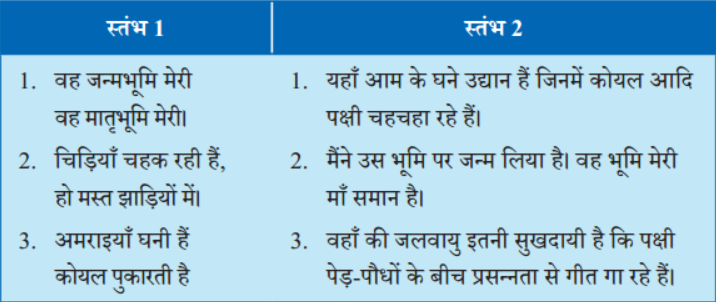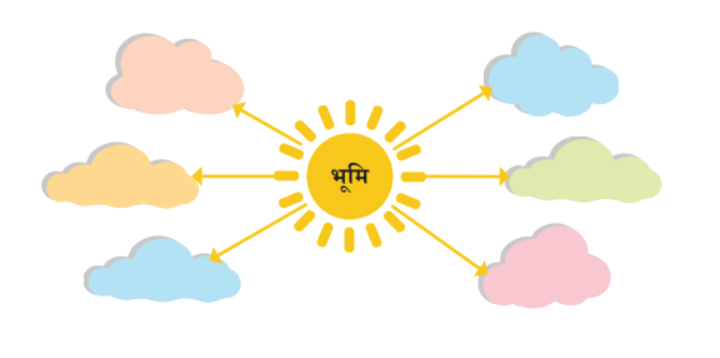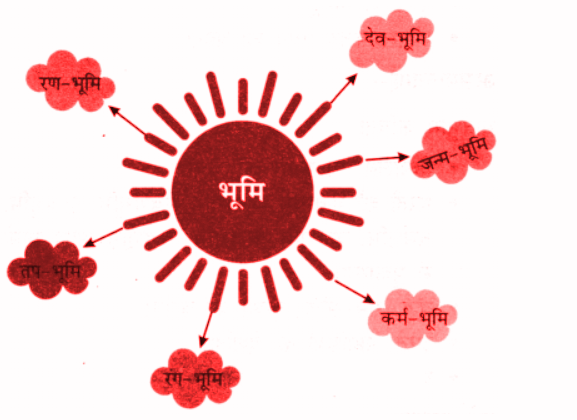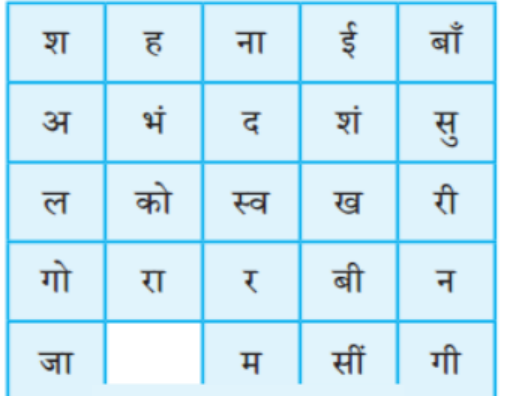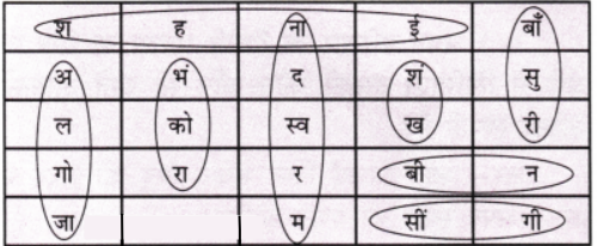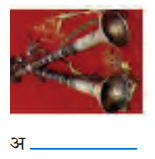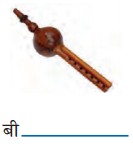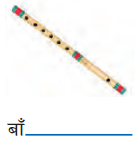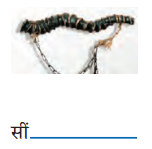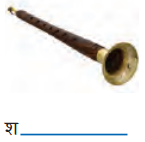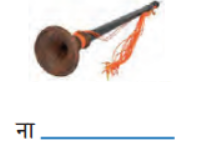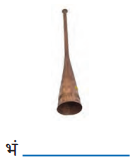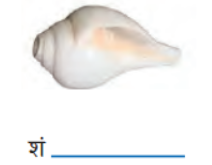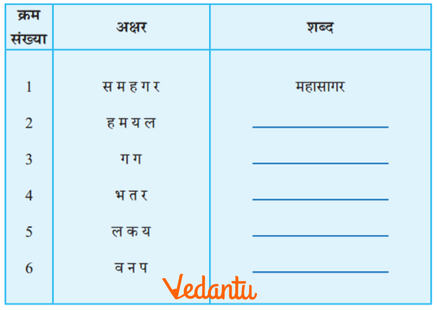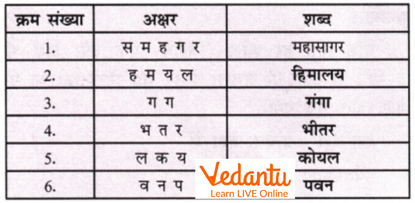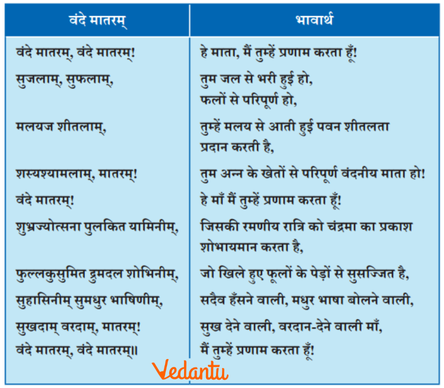Matrabhumi (मातृभूमि) Questions and Answers - Free PDF Download
FAQs on NCERT Solutions For Class 6 Hindi Malhar Chapter 1 Matrabhumi (मातृभूमि) - 2025-26
1. What is the central theme of Matrabhumi class 6 chapter?
Matrabhumi explores the deep emotional bond between a person and their motherland. The chapter emphasizes patriotism, love for one's country, and the importance of respecting the land that nurtures us from birth.
2. How do NCERT Solutions for Class 6 Hindi Chapter 1 help students understand the poem better?
NCERT Solutions provide step-by-step explanations of each question, breaking down complex meanings used in the Matrabhumi poem. NCERT solutions include word meanings, line-by-line explanations, and answers to all exercise questions with proper reasoning. This is how it help students understand the poem better.
3. Which literary devices are used in the Matrabhumi poem?
The poem uses personification by treating the motherland as a living being, metaphors comparing the country to a mother, and imagery that creates vivid pictures of the homeland's beauty and significance.
4. Where can students download the Class 6 Hindi Chapter 1 PDF question answer for free?
Students can access the Free PDF of Matrabhumi question answers from Vedantu's website, which provides comprehensive solutions without any cost.
Steps:
Visit the official Vedantu NCERT Solutions page
Navigate to Class 6 Hindi section
Download the Chapter 1 PDF directly
Save for offline study sessions
5. What emotions does the poet express about the motherland in this chapter?
The poet expresses deep reverence, gratitude, and unconditional love for the motherland. There's a sense of pride, belonging, and emotional attachment that transcends physical boundaries and material possessions.
6. How should students approach answering questions from Matrabhumi class 6 question answer chapter 1?
Students should first read the poem carefully, understand the meaning of difficult words, and then analyze the poet's message before attempting answers. Poetry questions require both comprehension and interpretation skills, demanding a systematic approach for accurate responses.|
Steps:
Read the poem multiple times for better understanding
Note down key themes and emotions
Refer to word meanings for clarity
Frame answers in complete sentences with examples from the text
7. What is the significance of comparing the country to a mother in this poem?
Comparing the country to a mother emphasizes unconditional love, protection, and nurturing qualities. This metaphor helps students understand patriotism through the familiar bond of maternal affection and care.
8. How do the exercise questions in Class 6 Hindi Chapter 1 enhance learning outcomes?
The exercise questions are designed to test comprehension, vocabulary, and analytical thinking through varied question types including short answers and explanatory responses. Different question formats help develop multiple skills - from basic recall to higher-order thinking and expression in Hindi.
9. What values does the Matrabhumi poem teach to young learners?
The poem instills patriotism, respect for cultural heritage, gratitude towards the homeland, and understanding of civic responsibility. It encourages students to appreciate their roots and develop national pride.
10. Why should students use structured solutions for Matrabhumi class 6 question answer PDF preparation?
Structured solutions provide organized answers with proper formatting, making it easier for students to understand concepts and present their responses clearly. Well-organized study material helps students learn effective answer writing techniques and improves their performance in examinations.























